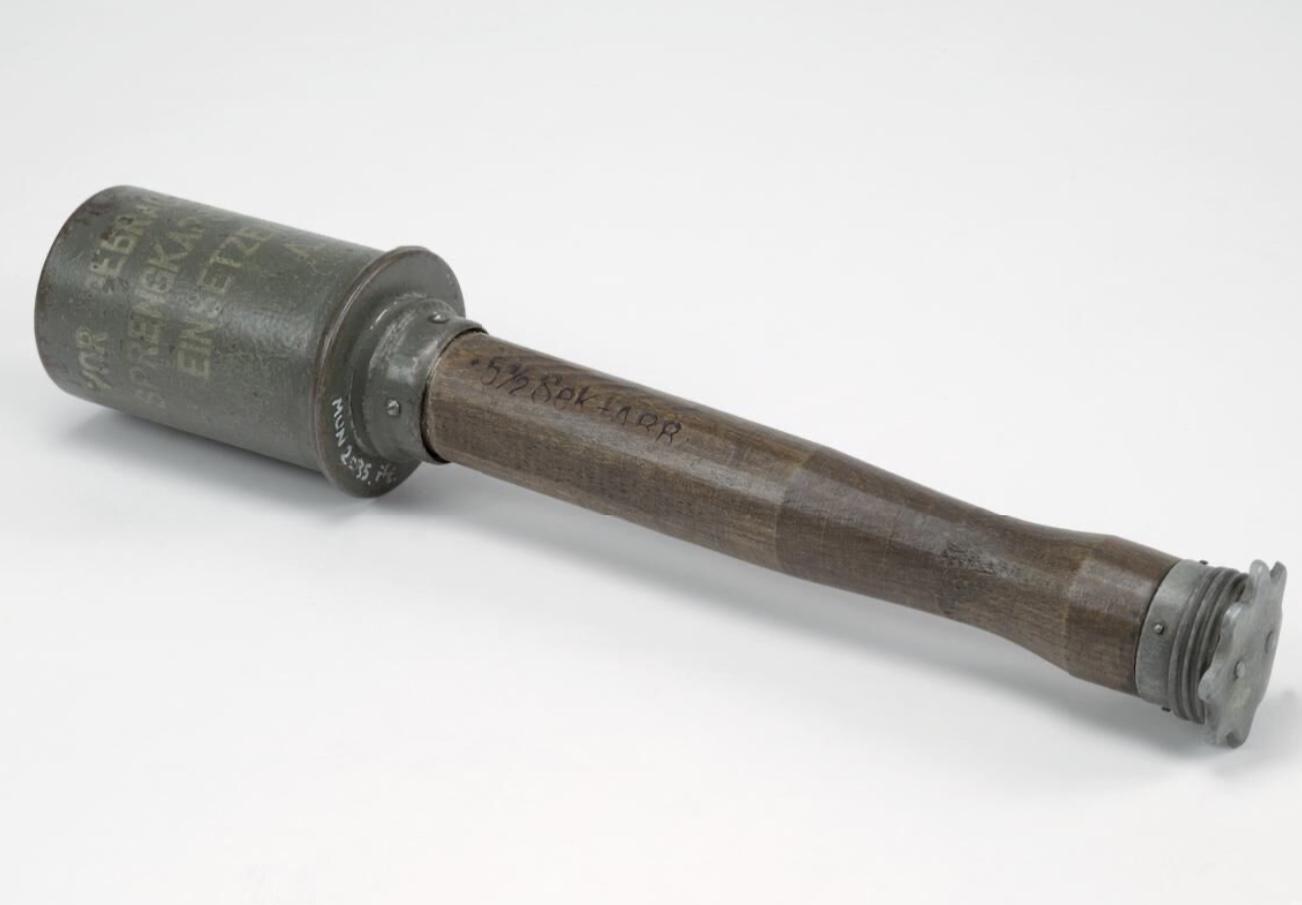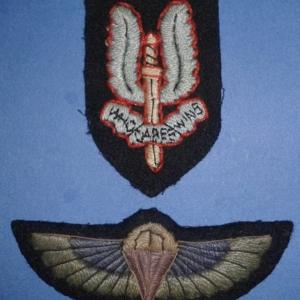
Stick grenade “potatoe masher”
The Stielhandgranate, commonly known as the "stick grenade," is one of the most iconic weapons associated with the German military during the two World Wars. Its distinct appearance, with a cylindrical head and wooden handle, made it instantly recognizable on the battlefield and in popular culture. This report explores the design, production, use, and legacy of this uniquely German grenade.
The Stielhandgranate was developed by the German Army during World War I. The earlier grenade used by German troops, the Kugelhandgranate (ball grenade), was heavy and difficult to throw accurately. The new design, introduced in 1915, was a response to this. It featured a long wooden handle for improved leverage and throwing distance, with a cylindrical explosive head attached at the top. This layout made it easier to throw farther than the conventional, round grenades used by other countries.
The grenade was designed to be used primarily in trench warfare, where short-range, explosive devices were vital. It used a time-delay friction igniter: the soldier would unscrew a cap at the base of the handle and pull a cord to activate the igniter, which gave a delay of around 4 to 5 seconds before detonation.
Over the course of the war, the original M1915 model was improved upon. Variants such as the M1916 and M1917 included changes like stronger construction materials and simpler manufacturing techniques. The most well-known model, the Model 24 (M24) Stielhandgranate, was developed in the interwar years and became the standard grenade for German forces during World War II.
The production of the Stielhandgranate was a major industrial effort. During World War I, manufacturing took place in numerous military factories across Germany. The body of the grenade was made from sheet metal or steel, and the handle was typically made from beech wood or other hardwoods. These parts were often made in separate facilities and then assembled in central plants.
By World War II, production had become even more streamlined and extensive. The M24 was mass-produced by many manufacturers. Notable factories included Rheinmetall-Borsig, Hugo Schneider AG (HASAG), and other industrial arms manufacturers operating under Nazi Germany's wartime economy. Between 1939 and 1945, over 75 million M24 grenades were produced.
To meet wartime demands, some grenades were made with simplified or low-cost materials, especially later in the war when resources were scarce. The friction igniter system was relatively simple to manufacture and proved reliable enough for mass deployment.
Despite being widely produced, each grenade required careful assembly. The explosive charge was housed in the cylindrical head, while the handle often contained the pull cord and igniter components. Soldiers would often carry these grenades in specialized bags or attached to their belts for easy access in close-combat situations.
The Stielhandgranate was primarily used by German forces in both World Wars. Its long handle allowed soldiers to throw it further than most traditional grenades, which was particularly useful in trench warfare or when attacking fortified positions. The design made it easier to throw with more accuracy and power, even from behind cover or while prone.
One major feature of the Stielhandgranate was that it was not a fragmentation grenade. It relied more on blast effect than shrapnel. To create a fragmentation effect, troops would sometimes attach metal sleeves or pack them with nails or other debris.
The grenade was particularly effective in assaults, where troops could throw them into bunkers, trenches, or buildings before storming the position. Because of its delayed detonation, soldiers had time to throw it and take cover before it exploded.
The Allies nicknamed it the "potato masher" due to its distinctive shape. It became one of the most recognizable weapons used by German troops. In turn, the grenade influenced the designs of other countries. The Soviet Union, for example, developed similar grenades with long handles for better throwing, and Japan’s Type 98 was also inspired by the Stielhandgranate’s form.
Other countries, including China, reverse-engineered or copied the design during the Second Sino-Japanese War. Even post-WWII, some nations kept variants of the stick grenade in service, albeit in smaller numbers.
The Stielhandgranate remains one of the most famous infantry weapons of the 20th century. While modern grenades tend to favor compact, round shapes with fragmentation effects, the stick grenade demonstrated how design can influence battlefield tactics. The use of the wooden handle for leverage was a practical, innovative solution that gave German infantry an edge in many situations.
After the Second World War, many remaining grenades were scrapped or destroyed, though some nations, like Switzerland, continued to keep them in reserve for several decades. The German Bundeswehr (post-war military) abandoned the design in favor of more modern hand grenades similar to those used by NATO allies.
Today, surviving examples of the Stielhandgranate are found in museums, private collections, and historical reenactments. Its image continues to appear in films, video games, and documentaries, symbolizing the German military and World War II as a whole.
Collectors often seek original M24 models, and inert versions are sometimes used for educational or theatrical purposes. Despite being over a century old, the Stielhandgranate’s design is still studied in military history and engineering for its simplicity and effectiveness.










